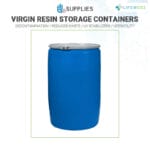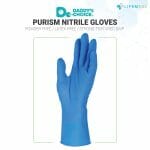What is Safety Workwear?
Safety workwear refers to specialized clothing and protective gear designed to ensure the safety and well-being of workers in hazardous environments. This clothing is tailored to provide protection from various workplace risks, including chemical exposure, extreme temperatures, electrical hazards, cuts, abrasions, and impact injuries. Common items of safety workwear include high-visibility vests, flame-resistant clothing, protective overalls, hard hats, steel-toed boots, and gloves. Safety workwear is essential in industries like construction, manufacturing, mining, and chemical processing, where worker protection is a critical component of day-to-day operations.
Why Safety Workwear Matters in the Enterprise Environment
In industries where workers face significant risks, providing safety workwear is essential for ensuring employee health and safety while maintaining regulatory compliance. Employers are legally obligated to provide adequate personal protective equipment (PPE) to mitigate workplace hazards, and safety workwear is often a central element of this equipment. Enterprise software solutions can help manage the distribution, tracking, and maintenance of safety workwear, ensuring that all workers are properly equipped and that safety standards are consistently met. By protecting workers from injuries and accidents, safety workwear reduces downtime, increases productivity, and fosters a safer workplace environment.
Benefits of Safety Workwear
Safety workwear provides numerous benefits that help protect workers from a range of hazards. Key benefits include:
- Injury Prevention: Safety workwear is designed to protect against specific hazards, such as cuts, impacts, burns, and chemical exposure, reducing the likelihood of workplace injuries.
- Enhanced Visibility: High-visibility safety clothing, such as vests and jackets, ensures that workers are easily seen in low-light conditions or busy environments, helping prevent accidents involving machinery or vehicles.
- Compliance with Regulations: Many industries have strict regulations regarding worker safety, and safety workwear helps businesses meet Occupational Safety and Health Administration (OSHA) or other local safety standards, avoiding fines and penalties.
- Comfort and Mobility: Modern safety workwear is designed to be both protective and comfortable, allowing workers to perform their tasks without hindrance while staying safe.
- Durability: Made from durable materials, safety workwear is built to withstand harsh conditions, offering long-term protection in hazardous work environments.
Types of Safety Workwear
There are various types of safety workwear, each designed to protect workers from different types of hazards. Common types include:
- High-Visibility Clothing: Used to enhance the visibility of workers, particularly in low-light or high-traffic areas, high-visibility vests, jackets, and overalls are commonly used in construction, roadwork, and logistics.
- Flame-Resistant (FR) Clothing: FR clothing is made from materials designed to resist ignition and protect the wearer from heat and flames. It is essential in industries such as oil and gas, welding, and firefighting.
- Protective Overalls: Coveralls and overalls protect the body from harmful substances like chemicals, dust, and debris. They are often used in construction, chemical processing, and industrial cleaning.
- Hard Hats: Hard hats protect workers from head injuries caused by falling objects or impacts and are required in construction, manufacturing, and mining industries.
- Steel-Toed Boots: Designed to protect the feet from impact, compression, and punctures, steel-toed boots are critical in environments where heavy equipment or sharp objects are present.
- Cut-Resistant Gloves: These gloves provide hand protection against sharp objects and cuts, making them ideal for industries such as manufacturing, food processing, and glass handling.
The Role of Enterprise Software in Managing Safety Workwear
For companies that require safety workwear, managing the inventory, distribution, and maintenance of these items can be a complex task. Enterprise software solutions can streamline the management of safety workwear by tracking usage, monitoring stock levels, and automating reordering processes. These systems also provide tools for ensuring that workers are equipped with the appropriate safety gear for their specific roles and responsibilities.
Additionally, enterprise software can help businesses stay compliant with safety regulations by tracking the condition of workwear, scheduling inspections, and maintaining records of employee PPE assignments. This not only ensures that workers are protected but also helps businesses avoid potential fines or legal liabilities associated with non-compliance.
Safety Workwear vs. Standard Workwear
While standard workwear is designed for comfort, durability, and functionality, safety workwear is specifically engineered to protect workers from hazards. Here’s a comparison between safety workwear and standard workwear:
- Safety Workwear: Focuses on protection from specific workplace hazards, such as chemicals, extreme temperatures, or falling objects. It meets industry safety standards and is often required by law in hazardous environments.
- Standard Workwear: Provides basic comfort, durability, and functionality for general tasks but may not offer the level of protection needed for dangerous jobs. Standard workwear is typically used in low-risk environments.
In industries with high-risk factors, safety workwear is mandatory to protect employees, while standard workwear may suffice in less hazardous roles.
Key Industries Using Safety Workwear
Safety workwear is a requirement in various industries where workers face potential hazards. Key industries include:
- Construction: Workers use hard hats, high-visibility vests, steel-toed boots, and other protective clothing to guard against falls, impacts, and equipment-related injuries.
- Manufacturing: Factory workers rely on safety workwear such as protective gloves, goggles, and overalls to prevent accidents involving machinery, chemicals, and sharp objects.
- Oil and Gas: Workers in the oil and gas industry wear flame-resistant clothing, steel-toed boots, and hard hats to protect against fire, explosions, and heavy equipment accidents.
- Mining: In mining environments, workers use helmets, boots, and durable protective clothing to guard against falling debris, heavy machinery, and hazardous materials.
- Healthcare: Healthcare professionals use safety workwear such as gloves, gowns, and masks to protect against biological hazards and exposure to chemicals or bodily fluids.
Conclusion
Safety workwear is an essential component of workplace safety protocols in industries where employees face hazardous conditions. By providing protection from risks like impact injuries, chemical exposure, and burns, safety workwear helps reduce workplace accidents and ensures compliance with safety regulations. Enterprise software solutions can assist businesses in efficiently managing their safety workwear programs, ensuring that workers are properly equipped and that all necessary safety standards are met. In environments where worker safety is a top priority, safety workwear plays a crucial role in promoting a safe, productive, and compliant workplace.
« Back to Glossary Index

















